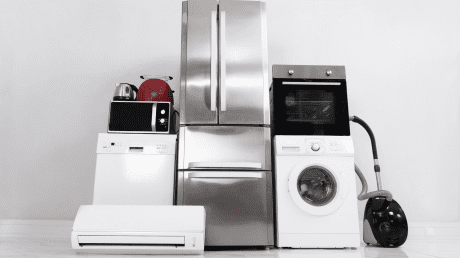
EU Commission Approves New Eco-Design Standby Regulation

On 17 April 2023, the EU Commission approved the new EU Ecodesign Standby Regulation (EU) 2023/826. This regulation will apply from 9 May 2025 and will repeal the existing EU Ecodesign Standby Regulation (EC) No 1275/2008 on this date.
Some of the main highlights of the text include the following:
1. Expansion and Clarification of the Products Covered
The EU Ecodesign Standby Regulation (EU) 2023/826 expands and clarifies the scope of covered products. New products specifically listed include:
- Appliances for hair treatments;
- Media streaming devices;
- Audio speakers;
- Complex set top boxes and Simple set-top boxes; [Note Regulation (EC) No 107/2009 on the Ecodesign of Simple Set-Top boxes is repealed on 9 May 2025.]
- Motor-operated adjustable furniture:
- height-adjustable desks;
- elevation beds and chairs, excluding medical devices and wheelchairs;
- other motor-operated adjustable furniture.
- Motor-operated building elements:
- shutters;
- blinds;
- screens;
- awnings;
- pergolas;
- curtains;
- doors;
- gates;
- windows;
- skylights;
- other motor-operated building elements.
This regulation does not apply to:
- Household dishwashers covered by Commission Regulation (EU) 2019/2022
- Household washing machines and household washer-dryers covered by Commission Regulation (EU) 2019/2023
- Desktop computers, integrated desktop computers and notebook computers covered by Commission Regulation (EU) No 617/2013
- Servers and data storage products covered by Commission Regulation (EU) 2019/424
- Electronic displays covered by Commission Regulation (EU) 2019/2021
- Projectors with mechanisms for exchanging the lenses with others with different focal length.
Please note the change in wording of some covered products to clear up any confusion:
- “Video recorders” are replaced by “video players”.
- “Hi-fi recorders” are replaced by “Hi-fi players”.
- “Hand-held video game consoles” are replaced by just “games consoles”.
- “Sports equipment with electric or electronic components” are replaced by just “sports equipment”.
2. New Stricter Energy Consumption Limits
Under EU Ecodesign Standby Regulation (EU) 2023/826 new stricter energy limits will apply. These new restrictions will apply 2 years after the date of application (.ie from 9 May 2027), except for the new standby limit for covered electrical and electronic products (EEE) with a display which applies from 9 May 2025.
The new power consumption limits are highlighted in bold below:
- Off mode power consumption limit for EEE is ≤ 0.50 Watts(W)
- From 9 May 2027 – Off mode power consumption limit for EEE is reduced to ≤ 0.30 W
- From 9 May 2025 – Standby mode power consumption limit for EEE with a display is ≤0.80 W. [Currently this is 1W, this new limit does not apply to tumble dryers]
- Standby mode power consumption limit for tumble dryers with a display is ≤1W.
- Networked Standby mode power consumption limit for HiNA equipment or equipment with HiNA functionality ≤ 8 W.
- From 9 May 2027, Networked Standby mode power consumption limit for HiNA equipment or equipment with HiNA functionality is ≤7 W
- Networked Standby power consumption limit for EEE (other than HiNA equipment or equipment with HiNA functionality) is ≤2 W
Please note the power consumption limits do not apply to large format printing equipment or to desktop thin clients, workstations, mobile workstations, and small-scale servers as defined in Regulation (EU) No 617/2013.
3. Delay Time to Switch to Other Modes
For coffee machines, the text relating to the delay times for switching to off-mode or standby mode is simplified to read as follows:
- For drip filter household coffee machines storing the coffee in an insulated jug, a maximum of five minutes;
- For drip filter household coffee machines storing the coffee in a non-insulated jug, a maximum of 40 minutes;
- For household coffee machines other than drip filter household coffee machines, a maximum of 30 minutes.
For EEE, other than coffee machines, the maximum delay time to switch to off-mode or standby mode is 20 minutes. For networked standby mode, the period is also 20 minutes unless this is inappropriate for the product’s intended use.
4. Websites and Instruction Manuals
Instruction manuals for end-users, and free-access websites of the manufacturers, importers or authorised representatives must include the specified information listed in Annex III point 3. As an alternative, certain information can be provided in the instruction manuals for end-users in the form of a link to this information in the free access websites.
5. Where is the Circular Economy?
Notably, this new regulation lacks requirements on the circular economy such as requirements relating to repair and the provision of spare parts which we have become accustomed to seeing in the newer type eco-design regulations. Perhaps the EU Commission could be seen as dropping the ball in this regard, as this new regulation could have been used to apply circular economy requirements horizontally across numerous product groups.
Author

Michelle Walsh, Senior Regulatory Compliance Specialist, Compliance & Risks
Michelle is a Senior Regulatory Compliance Specialist working at Compliance & Risks since 2008. She specializes in monitoring, reviewing, summarising, analysing and assessing global regulations across the areas of energy efficiency, eco-design, eco-labelling, e-waste/WEEE, and transboundary movement of hazardous waste.
She is a qualified Solicitor and holds a Bachelor of Law Degree (BCL) and a Higher Diploma, Business Finance and Information Systems from University College Cork, Ireland.
Market Insights straight to your inbox
Join 40,000+ product compliance & market access experts around the world



